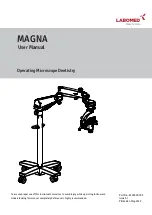
Matrix PS System Installation and Commissioning Guide
|
109
Dali Wireless Proprietary and Confidential | DW-MAN-036 Rev 06
1 1
I NSTAL L AT I O N V ER I F I C AT I O N
This chapter describes:
Startup LED sequence
Standby LEDs
Troubleshooting for LED alarms
When the Matrix PS system is powered on after installation, the host units and remotes
are automatically placed in Standby. If there is an alarm, the LEDs indicate an alarm
condition to be reviewed or resolved.
If a unit does not power on into Standby, resolve the problem before commissioning the
system.
In Standby, units and modules meet following conditions:
Host units and remotes are powered on, with LEDs indicating Standby mode
RF modules are not available transmitting or receiving RF signals
Optical ports are active but not transmitting or receiving the data stream
















































